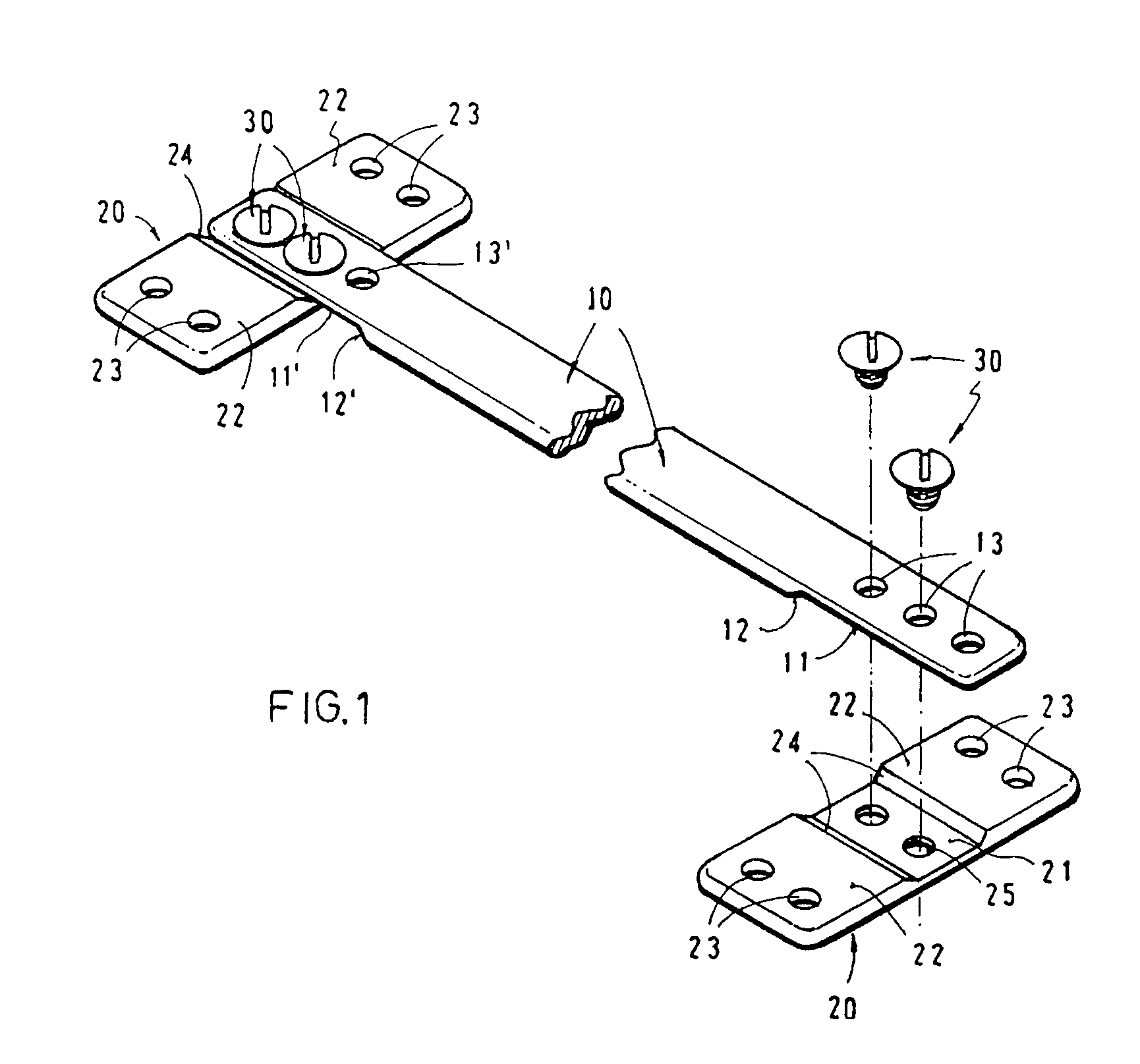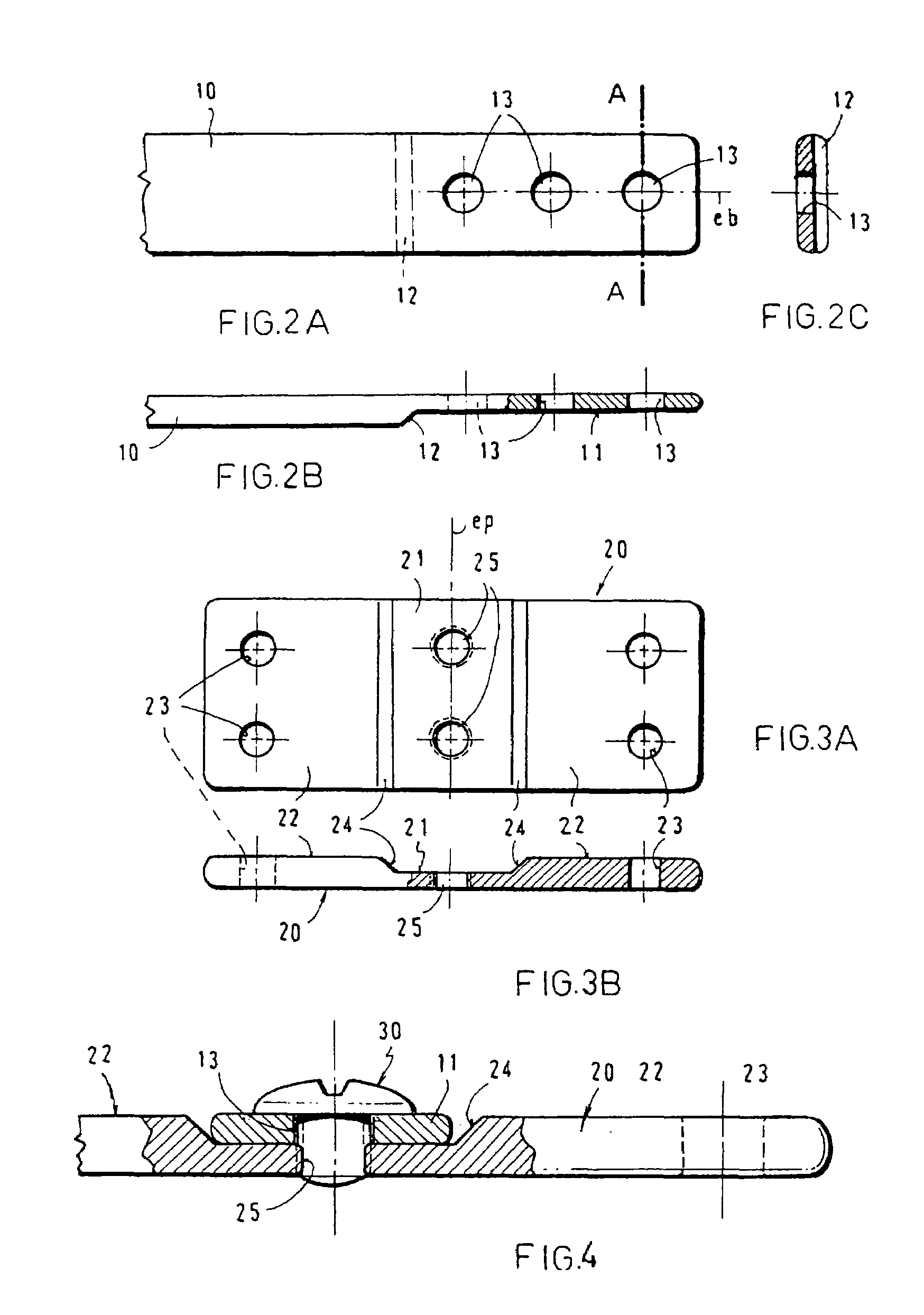Apparatus for the correction of chest wall deformities such as Pectus Carinatum and method of using the same
a technology for pectus carinatum and surgical equipment, which is applied in the field of surgical equipment for the correction of chest wall deformities, can solve the problems of reducing the elasticity required for correct expansion, long and disabling, and reducing the size so as to improve the esthetic effect, reduce the thickness of the chest wall, and the effect of easy inserting and removal
- Summary
- Abstract
- Description
- Claims
- Application Information
AI Technical Summary
Benefits of technology
Problems solved by technology
Method used
Image
Examples
Embodiment Construction
[0070]The apparatus for the correction of chest wall deformities, such as “Pectus Carinatum”, of the present invention, comprises essentially a bar (10) formed as a pressing element for correcting the congenital chest wall deformity, two plates (20) for stabilizing and fixing the bar (10), and threaded elements (30), particularly screws provided to form movable or removable attachments between said bar (10) and said plates (20), also allowing registration between the bar ends and the respective plates.
[0071]The bar (10) is preferably made from 316 L steel by cold lamination, though it may be made from various bio-compatible materials, such as titanium, cobalt-chrome, etc; biodegradable materials of various kinds may also be used. The bar (10) is made following the specifications given by ASTM F382-95, having a minimum bending strength of about 65 in-lb or a minimum yield strength of the material of 35×106 psi or a minimum bending stiffness of about 1000 lb-in2.
[0072]The bar (10) is ...
PUM
 Login to View More
Login to View More Abstract
Description
Claims
Application Information
 Login to View More
Login to View More - R&D
- Intellectual Property
- Life Sciences
- Materials
- Tech Scout
- Unparalleled Data Quality
- Higher Quality Content
- 60% Fewer Hallucinations
Browse by: Latest US Patents, China's latest patents, Technical Efficacy Thesaurus, Application Domain, Technology Topic, Popular Technical Reports.
© 2025 PatSnap. All rights reserved.Legal|Privacy policy|Modern Slavery Act Transparency Statement|Sitemap|About US| Contact US: help@patsnap.com



